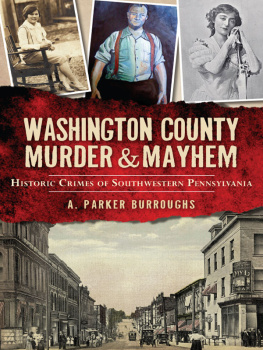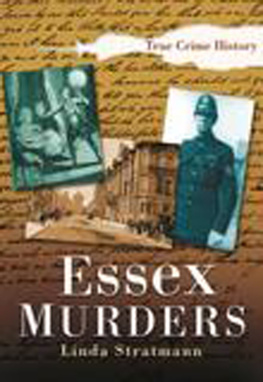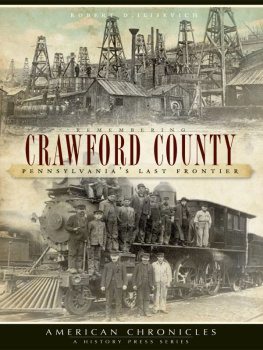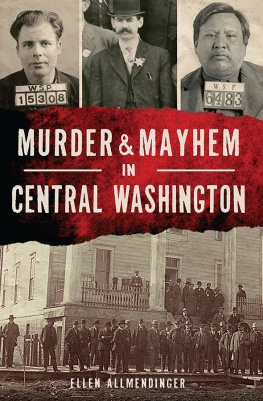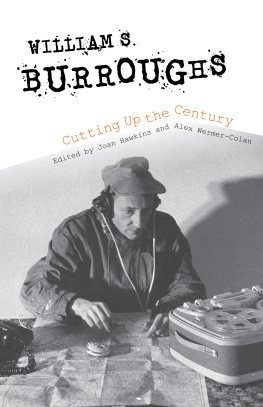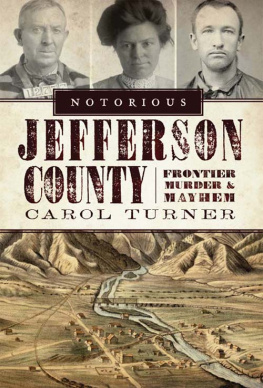
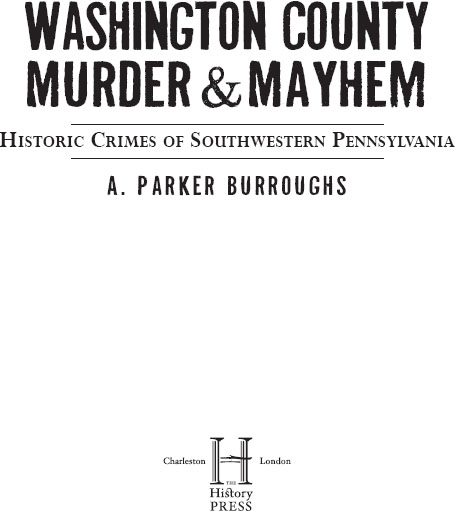
Published by The History Press
Charleston, SC 29403
www.historypress.net
Copyright 2014 by A. Parker Burroughs
All rights reserved
A Death in the Lyric appeared first in serialized form in the Observer-Reporter, Washington, Pennsylvania, in 2012.
The West Enders: A Story of Murder in Desperate Times appeared first in serialized form in the Observer-Reporter in 2013.
First published 2014
e-book edition 2014
ISBN 978.1.62584.931.1
Library of Congress Cataloging-in-Publication Data
Burroughs, A. Parker.
Washington County murder & mayhem : historic crimes of southwestern Pennsylvania / A. Parker Burroughs.
pages cm
Includes bibliographical references and index.
print edition ISBN 978-1-62619-400-7 (paperback)
1. Murder--Pennsylvania--Washington County--History. 2. Crime--Pennsylvania--Washington County--History. 3. Washington County (Pa.)--History. 4. Washington County (Pa.)--Social conditions. 5. Washington County (Pa.)--Biography. I. Title. II. Title: Washington County murder and mayhem.
HV6533.P4B87 2014
364.10974882--dc23
2014009590
Notice: The information in this book is true and complete to the best of our knowledge. It is offered without guarantee on the part of the author or The History Press. The author and The History Press disclaim all liability in connection with the use of this book.
All rights reserved. No part of this book may be reproduced or transmitted in any form whatsoever without prior written permission from the publisher except in the case of brief quotations embodied in critical articles and reviews.
For Alice, my wife and best friend
CONTENTS
PREFACE
Violence came to Western Pennsylvania the moment Europeans stepped on its soil. The French and British fought over it during the French and Indian War. When settlers first arrived and established the Ohio River as the edge of the frontier, they battled the Native Americans. Attacks on forts and farms were followed by bloody reprisals. As if that werent enough, roving packs of bandits terrorized this lawless land in the later half of the eighteenth century.
Soon after independence, the law arrived. Thomas Richardson, a burglar and member of the notorious Doane gang, was the first to be hanged on Gallows Hill above what is now Washington in October 1784. The violence continued as Washington County grew in population. Twelve more men convicted in the county would be executed for murder in the next century and a half. Those men and the stories of their crimes are now mostly forgotten, along with other calamity that is nevertheless woven into the fabric of local history and culture.
Washington Countys most famous crime came on New Years Eve 1969, when Joseph Jock Yablonski; his wife, Margaret; and their daughter, Charlotte, twenty-five, were shot to death in their Washington County home by three assassins. The murders stunned the quiet community of Clarksville, where the reform candidate for the United Mine Workers of America (UMWA) presidency and his family lived. Yablonskis assassination was ordered by W.A. Tony Boyle, president of the UMWA.
The shocking Yablonski murders were the subject of several books. This volume, however, is about crimes that have long since passed from memory.
The six stories in this book have been resurrected from old, brittle news clippings and from the dust-covered volumes of bound newspapers in the archives of the Observer-Reporter, descendant of the Reporter, founded in 1808. These news reports recorded the events as they happened, in all their confusion and contradiction. The passage of time creates a clearer focus. I have used the news articles as a guide to sift through trial transcripts, government documents, letters and other remembrances and, through forensic journalism, to assemble the facts in narrative fashion.
These are true stories. In a few places, I have imagined details to enhance the flow of the narrative; however, no dialogue has been invented. The characters speak in their own words, as recorded in trial transcripts and other sworn testimony, recollection of witnesses and direct quotations in published articles.
I discovered most of these tales through serendipity, stumbling across them while researching more mundane subjects. Many more stories from Washington Countys historysome just as intriguing and disturbing as theselie dormant in the crumbling pages of the past, just waiting to be told.
ACKNOWLEDGEMENTS
This book would not have been possible without the assistance of a man who died forty-five years ago. Earle Forrest began meticulously to save newspaper clippings soon after he began work at the Washington Reporter in 1920 and kept it up for nearly fifty years. The result was a couple of filing cabinets packed with twentieth-century Washington County history. It is from those cabinets that sprang most of the stories in this book.
Those clipping files are the property of the Observer Publishing Co., which has employed me for nearly as long as it did Forrest. I thank my friend, publisher Thomas P. Northrop, for his unflagging support, encouragement and, of course, all those paychecks.
My wife, Alice, was critic, editor and proofreader of these stories.
Among those who assisted me in my research were Clay Kilgore and the staff of the Washington County Historical Society; Ella Hatfield, research librarian at Citizens Library; the staff of the Washington County Clerk of Courts; Sally Scheidt, Barbara Miller and Bob Mish of the Observer-Reporter; Fort Vance Historical Society; and employees of the Burgettstown Community Library and Heritage Library, McDonald.
I also wish to thank family members of Dorothy Horne and Ray Kunselman for their help with The West Enders and descendants of Sylvester and Iva Young for their assistance with The Murder of Thelma Young.
A DEATH IN THE LYRIC
The ringing telephone awakened James H. Shannon MD in the darkness before dawn. A few minutes later, he was walking swiftly up Main Street, bundled against the near-zero temperature. Snow was falling lightly on the Sunday morning of February 3, 1907. The only noise the doctor would have detected was that of his own footsteps until he had nearly passed the Lyric Theatre and heard a commotion in the alley. He turned and saw several men carrying what appeared to be a body into the doorway of the building at 78 North Main Street. One of the men hailed him, and he followed the group up the stairway and into a room, where they laid their motionless burden on a bed.
One look at the partially clothed young woman told Dr. Shannon she was quite clearly dead. Her face was still frozen in what he knew as risus sardonicus, literally mocking laugh. It was not so much the expression of the corpse that startled him, though, but rather the fact that he knew her.
Frances C. Martin was a pretty eighteen-year-old, with brown eyes, brown hair and a fair complexion, sturdily built at five feet, four inches tall and weighing 140 pounds. She had been to young Dr. Shannons office just three days earlier, when he found her to be in good health but also pregnant.
The Harvard-educated Shannon, at thirty years old, had only recently begun his practice in the borough of Washington, Pennsylvania, after having interned at hospitals in Boston, Massachusetts. He rented a room at the corner of West Prospect and Dewey Avenues and kept an office at 63 South Main Street.
Next page
